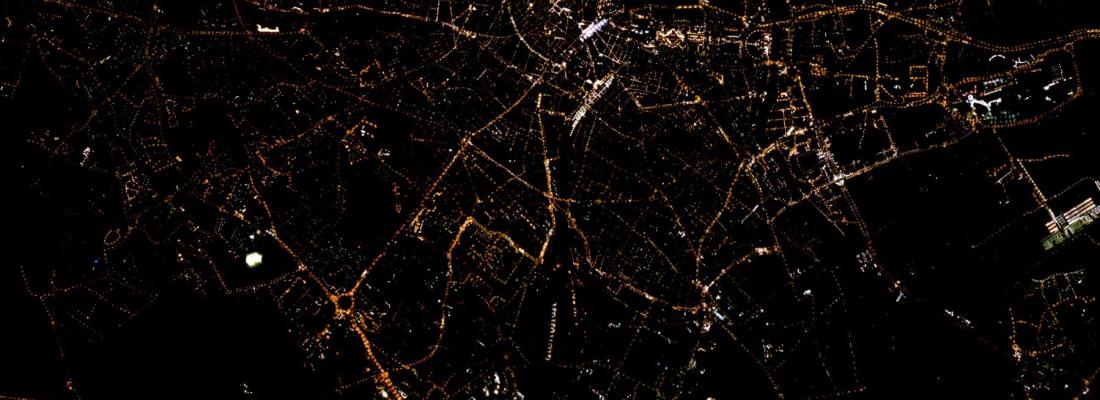Society and regional strategies Reading time 2 min
Reducing urban lighting: balancing the needs of biodiversity and urban residents
Published on 23 June 2025

Light pollution has risen in recent years, mainly due to urban expansion, the proliferation of artificial lighting and the use of LED technologies, which allows to emit more light at the same cost. Artificial lights at night disturb many diurnal and nocturnal species alike, causing disruptions in dark-light cycles and reproductive, foraging and orientation behaviour, among other issues. Lighting at night also impacts human health, such as by disrupting people’s sleep cycles. However, debates around public lighting tend to be “all or nothing” – with residents’ needs on one side and those of biodiversity on the other – and revolve around urban lighting being turned off. The Montpellier Méditerranée conurbation emits light pollution that is potentially problematic due to its proximity to the Cévennes National Park. In this study, researchers conducted a spatial analysis of species’ needs for reduced light pollution and acceptance among urban residents of changing public lighting.
Mapping the needs of biodiversity and residents’ expectations
Based on high-resolution satellite images, the scientists mapped the light pollution from the conurbation. They then looked at six species groups (birds, amphibians, two insect groups and two bat groups) and assessed their landscape connectivity[1] needs at night based on satellite imagery, local knowledge and species inventories from three naturalist associations (the Office for Insects and their Environment – OPIE, the Languedoc-Roussillon Bat Group – GCLR and the League for the Protection of Birds – LPO). They ranked the lighting points (streetlights) based on their urgency for light pollution reduction. The research team also surveyed 1,148 residents in the metropolitan area to understand their urban lighting preferences in various situations. By comparing the needs of both biodiversity and residents, the team was able to identify zones where action on public lighting would be mutually beneficial and situations where compromises were necessary. Three types of situations were observed:
- Neighbourhoods where biodiversity faces serious challenges that could improve from a rapid reduction in light pollution with the support of residents.
- Neighbourhoods in central urban areas with moderate ecological challenges where some lighting reduction measures appear to be better accepted than turning lights off (e.g., changing the colour, lowering the intensity, adjusting the direction of lights).
- Neighbourhoods with major ecological challenges that also face strong resistance from the public regarding turning lights off. In these cases, there are effective reduction measures that could be adopted that would have a positive impact on biodiversity. Such measures can be supported by awareness-raising actions to inform the public about the effects of light pollution.
All the results have been integrated into an interactive map in the SustainLight web app, designed to help decision makers and residents explore different solutions and make public lighting choices for the Montpellier Méditerranée conurbation.
[1] Ecological connectivity refers to the ability of animal and plant species to move and spread freely across their environments.
Reference
Tardieu L. et al. (2025). Planning sustainable urban lighting for biodiversity and society. Nature cities 2, 518–531 DOI : https://doi.org/10.1038/s44284-025-00245-7
